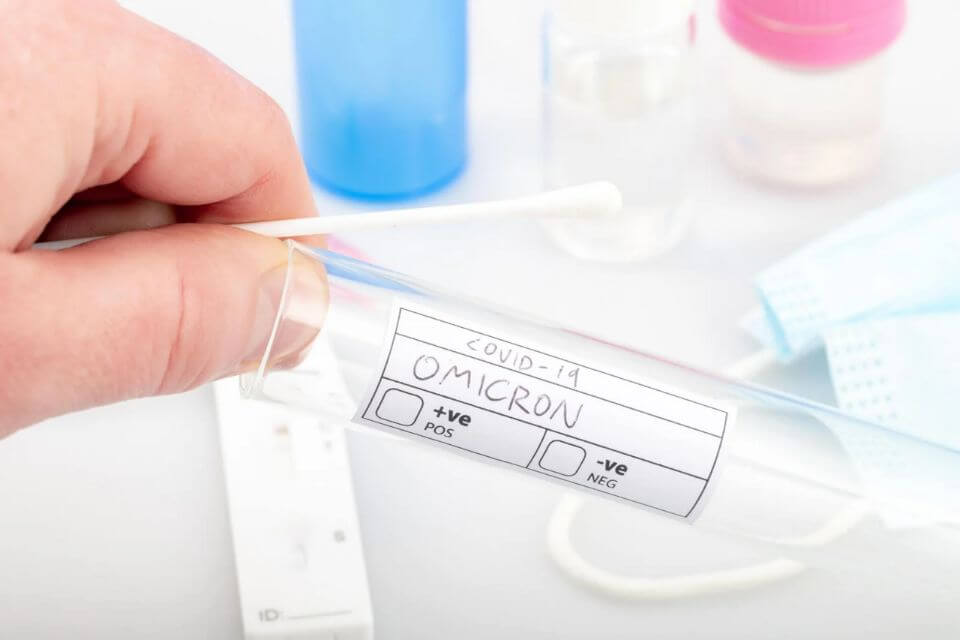News and Blogs
Cracking the Code: Optimal SARS-CoV-2 Testing for Omicron

Limited data existed on the effectiveness of different sampling methods for detecting the SARS-CoV-2 Omicron variant through RT-PCR and antigen testing. With the rise of self-testing and debates over optimal sampling, understanding viral load differences across sample types like nasopharyngeal (NP), nasal, oropharyngeal (OP), and saliva became crucial. This study aimed to fill that knowledge gap.
How Was the Research Carried Out?
The researchers collected samples from two cohorts in Atlanta during Omicron's peak in January 2022. The first was a small family cohort that self-collected nasal, OP, and saliva samples almost daily after exposure. The second was a cross-sectional cohort of 121 individuals with COVID-19 symptoms onset within 7 days, from whom trained staff collected mid-turbinate (MT) nasal, OP, and saliva samples. All specimen types underwent RT-PCR and ultrasensitive antigen testing.
What Did the Family Cohort Data Reveal?
Longitudinal sampling of the three family members consistently showed higher viral antigen levels and lower cycle threshold (Ct) values, indicating greater viral RNA copies, in self-collected nasal swabs compared to OP and saliva across almost all timepoints. This suggested a "nasal-predominant" viral load phenotype persisted in this cohort throughout their infections.
Were Cross-Sectional Findings Consistent with the Family Cohort?
No clear predominant sample type emerged from the 39 confirmed positive cases in the cross-sectional cohort. Rather, the data revealed a mix of "MT-predominant" and "OP-predominant" viral load phenotypes when comparing paired MT and OP samples, with no obvious trends based on time since symptom onset. Saliva showed significantly higher antigen levels than MT or OP samples, but this did not translate to improved diagnostic performance.
How Did Diagnostic Performance Compare Across Sample Types?
For RT-PCR, positive percent agreement (PPA) ranged from 89.7-94.4% across MT, OP, and saliva, with partially overlapping confidence intervals. Antigen PPA was lower, from 64.9-91.4% at the 3 pg/mL clinical cutoff. A composite "MT or OP" result trended toward increased sensitivity but did not achieve statistically significant improvement over MT alone for either RT-PCR or antigen testing across clinically-relevant thresholds.
Were Any Symptom Associations Detected?
Subgroup analyses suggested potential associations between symptoms and sample viral loads. Participants with sore throat had a non-significant trend toward higher OP viral antigen levels and OP antigen test sensitivity compared to those without sore throat. For rhinorrhea, MT antigen levels and test sensitivity appeared higher in those with the symptom versus without, particularly at higher antigen thresholds.
What Factors Impacted Viral Load Measurements?
Sample type was significantly associated with antigen concentration in statistical modeling, but not Ct values. Duration of symptoms and vaccination status did not significantly impact Ct or antigen levels. Overall, MT and OP specimens showed poor absolute concordance of Ct and antigen measurements, reflecting the diverse MT- and OP-predominant phenotypes observed.
What Are the Implications of These Findings?
The data did not identify a clearly superior single anatomic site for SARS-CoV-2 testing during Omicron's prevalence. However, trends suggesting higher sensitivity with concurrent MT and OP sampling warrant further study on combined multi-site collection methods, as does the potential utility of symptoms in predicting optimal sample types. While saliva exhibited high antigen levels, lack of validated saliva rapid tests limits current clinical utility. Ultimately, rigorously designed studies with larger sample sizes are still needed.
Click to View → Mantacc OP swabs
References






